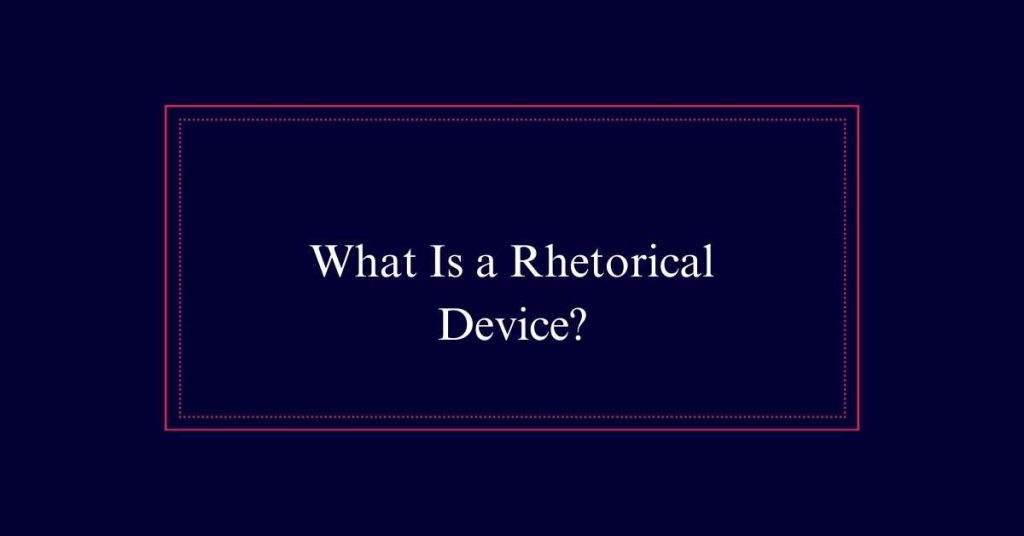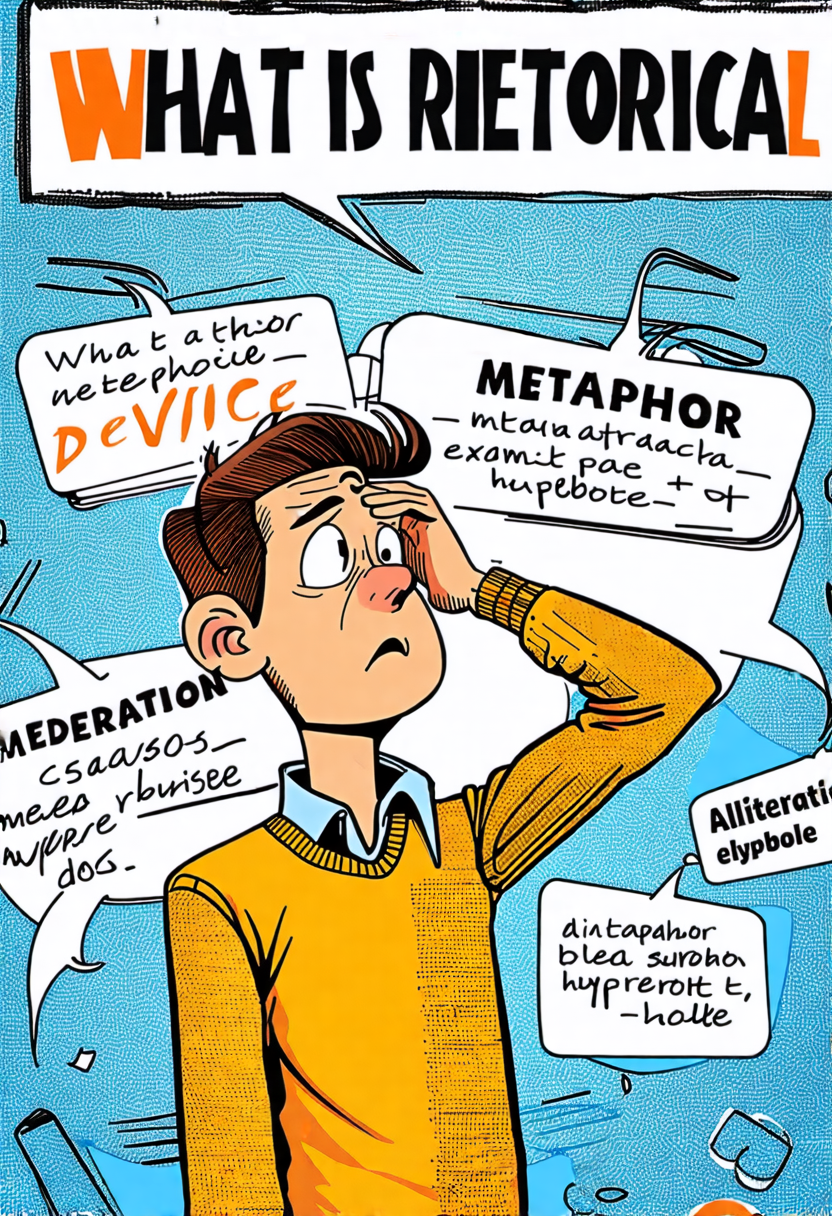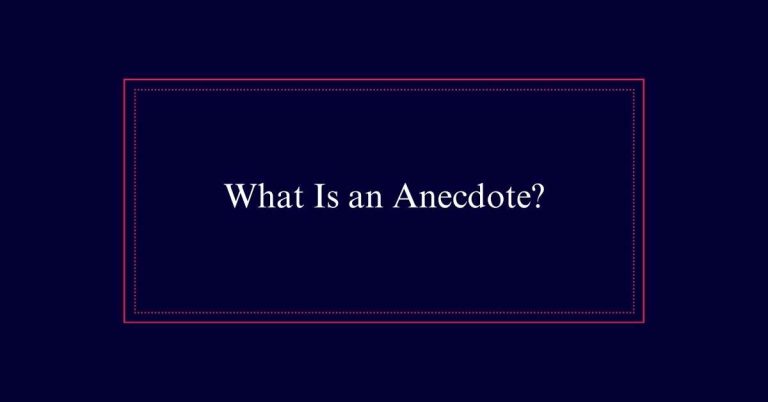What Is a Rhetorical Device?
A rhetorical device is a technique that enhances communication and persuasion. Common types include metaphors, similes, alliteration, and rhetorical questions. For example, a metaphor like “The world is a stage” creates vivid imagery, while a rhetorical question like “What is the meaning of life?” provokes thought. Rhetorical devices emphasize key points, engage audiences, and make messages more memorable.
Definition of Rhetorical Devices
A rhetorical device is a linguistic tool used to enhance communication and persuade an audience. These devices are rooted in the principles of rhetoric, which aim to evoke specific understanding and strengthen arguments.
Common rhetorical devices include metaphors, similes, alliteration, and rhetorical questions. Each device serves a unique function, such as emphasizing points, creating vivid imagery, or eliciting emotional responses.
By employing these tools, speakers and writers can make their messages more compelling and memorable. Rhetorical devices also help in engaging the audience, making the communication process more effective.
Key Principles of Rhetoric
Understanding the key principles of rhetoric is essential for mastering effective communication. Rhetoric involves the art of persuasion, focusing on how messages are constructed and delivered.
The fundamental principles include ethos, pathos, and logos. Ethos appeals to the speaker’s credibility, aiming to build trust with the audience. Pathos targets the audience’s emotions, seeking to evoke feelings that support the speaker’s argument. Logos relies on logical reasoning, using facts and evidence to convince the audience.
These principles work together to create compelling and persuasive communication. Additionally, kairos, or the sense of timing, is pivotal. It ensures that the message is delivered at the most opportune moment, enhancing its impact.

Common Types of Rhetorical Devices
Common rhetorical devices include anaphora, hyperbole, litotes, personification, and satire. Anaphora involves the repetition of a word or phrase at the beginning of successive clauses. It builds rhythm and emphasizes a point.
Hyperbole uses extreme exaggeration for effect, often creating a dramatic impression. Litotes is a form of understatement that uses negative phrasing to affirm a positive statement.
Personification gives human traits to non-human entities, making abstract ideas more relatable. Satire employs humor, irony, or ridicule to criticize or highlight flaws in society, politics, or behavior.
Functions of Rhetorical Devices
Rhetorical devices serve to emphasize key points and engage the audience effectively. They highlight important ideas, making them more memorable. By employing specific techniques, such as metaphors or repetition, speakers and writers can draw attention to vital aspects of their message. This helps to clarify complex ideas and guarantees that the audience grasps the intended meaning.
Moreover, rhetorical devices can evoke emotions, making the content more relatable and impactful. For instance, using vivid imagery can paint a picture in the listener’s mind, creating a stronger connection to the material.
Enhancing Persuasiveness
Effective use of rhetorical devices can greatly enhance the persuasiveness of a message. By employing tools like anaphora, hyperbole, and personification, speakers and writers can emphasize key points and engage their audience more effectively.
These devices help to evoke emotional responses, making arguments more compelling and memorable. For instance, repetition through anaphora can reinforce an essential message, while hyperbole can highlight the importance of an idea. Personification can bring abstract concepts to life, making them more relatable.
Ultimately, rhetorical devices serve to clarify and strengthen communication, ensuring that the intended message resonates with the audience. This strategic use of language can have a significant impact on how a message is received and acted upon.
Examples in Literature
In literature, many authors skillfully employ rhetorical devices to enhance their storytelling. William Shakespeare, for instance, extensively uses metaphors to add depth and meaning to his characters’ dialogues.
In ‘1984,’ George Orwell’s allegorical storytelling effectively critiques totalitarian regimes. Jonathan Swift’s ‘A Modest Proposal’ uses satire to highlight social issues and provoke thought.
Emily Dickinson often employs personification in her poetry to convey emotions and abstract ideas vividly. Edgar Allan Poe utilizes symbolism in his works, such as ‘The Raven,’ to create a haunting atmosphere and evoke specific feelings.
Rhetorical Vs. Literary Devices
While both rhetorical and literary devices aim to enhance communication, they serve distinct purposes in writing. Rhetorical devices focus on persuasion and influencing the audience’s perception. They are often used in speeches, advertisements, and political writing. Examples include ethos, pathos, and logos.
On the other hand, literary devices enrich the narrative and explore themes. They are commonly found in novels, poems, and plays. Metaphors, symbolism, and irony are typical examples.
Though some devices can overlap, their primary goals differ. Rhetorical devices aim to persuade and engage directly. Literary devices seek to evoke emotion and provoke thought.
Identifying Rhetorical Devices
To identify rhetorical devices, focus on elements like repetition, figurative language, and tone. Repetition involves the deliberate use of the same word or phrase to emphasize a point.
Figurative language includes metaphors, similes, and personification, which add vivid imagery and deeper meaning to the text.
Tone refers to the writer’s attitude conveyed through word choice and style, influencing how the audience perceives the message.
By examining these elements, you can uncover the techniques used to engage and persuade the audience. Look for patterns, emotional appeals, and stylistic choices that enhance the argument.
Analyzing Effectiveness
To wrap up the analysis of rhetorical devices, consider reflecting on the memorability of the message. Effective rhetorical devices should leave a lasting impression, reinforcing the key points and ensuring they resonate with the audience.
Begin by evaluating the device’s impact on the audience. Does it evoke the desired emotions or reactions? Assess the clarity and strength of the argument. Determine if the rhetorical device enhances understanding or if it confuses the message.
Consider the context and relevance of the device within the text. Does it align with the overall tone and purpose? Examine the engagement level. Does the device captivate the audience’s attention?
Importance in Communication
Rhetorical devices play a crucial role in enhancing effective communication. They help convey complex ideas more clearly and persuasively. By using these tools, speakers and writers can emphasize key points and engage their audience.
Rhetorical devices like metaphors, analogies, and hyperbole simplify complicated concepts, making them easier to understand. They also evoke emotions, which can make arguments more compelling and memorable. In professional settings, effective use of rhetorical devices can boost persuasion and influence. This leads to better decision-making and stronger connections.
Ultimately, rhetorical devices are essential for anyone looking to communicate more effectively, whether in writing, speaking, or presentations. They enrich the message and ensure it resonates with the audience.







